Ideal in appearance and amazing in taste, Polet pepper: a detailed overview of the variety and rules for growing it
The Polet variety of pepper is ideal for growing in private plots and spacious farm fields. It annually shows high and stable yields and is easy to plant and care for.
The taste and commercial qualities of sweet pepper are excellent, which makes it possible to use it in the preparation of a wide variety of dishes. Let's take a closer look at what Polet pepper is and how to grow it correctly.
What type of pepper is this?
The variety appeared thanks to the work of Moldovan breeders, and only a few years later came to Russia. The vegetable is recommended for cultivation in the Central Black Earth and North Caucasus regions. Depending on climatic conditions, peppers are grown in greenhouses or in the open air.
Characteristics and description of the variety
Poljot is a mid-season variety, the ripening period ranges from 110 to 140 days. The bushes are small, reaching a height of 50-60 cm. There are few leaves, they are rough to the touch and have a dark green color. The plant rarely gets sick, especially if it is planted in greenhouses or greenhouses.
Fruit characteristics and yield
Peppers are medium size, cone-shaped. At the stage of technical ripeness they acquire a green color, then turn yellow or red. The weight of one fruit varies from 100 to 150 g.
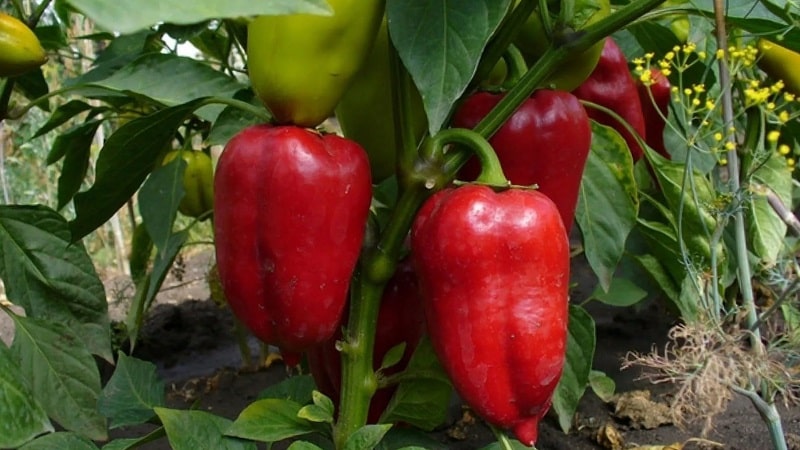
The length is about 15 cm, the wall thickness is 8 mm, so the variety is perfectly stored and can be transported over long distances.Productivity - 8 kg per 1 sq. m. The surface is glossy, smooth. The taste is sweet and juicy, the pulp contains a large amount of vitamins and mineral components.
Interesting! Bell pepper is a dietary product, since 100 g of the vegetable contains only 27 kcal. The vegetable is enriched with dietary fiber, fiber, ascorbic and folic acid, which makes dishes with the addition of bell pepper extremely healthy.
Preparation for cultivation
Preparations for cultivation begin in March. The first step is to choose a place to plant the vegetable. Pepper thrives in loose and fertile soils with low acidity levels.
To prepare the beds, remove all debris, weeds and remnants of last year's plants. The soil is carefully dug up and peat, humus or leaves are added to the soil. These elements warm the earth and have a positive effect on plant growth. Large and hard clods of earth must be broken up with a shovel or rake, after which the soil is leveled.
Important! If the row spacing in the beds is not visible, it is recommended to trample them down and cover them with a layer of straw or foliage. To ensure that the edges of the beds remain clear, a rope is stretched across the border and secured with wooden pegs. This technique will give the beds a well-groomed and healthy look.
An important step is seed preparation. First, they are checked for germination. This is done using a saline solution, where the seeds are dropped and stirred clockwise. Those specimens that sank to the bottom are suitable for planting, as they turned out to be the heaviest.
The seeds are soaked in a solution of Bordeaux mixture or Formalin for 3-4 hours, then left to dry on a clean napkin. The final stage of preparation is hardening.The seed material is placed in the freezer for a day, after which the seedlings are planted.
Planting seedlings
Polet pepper seedlings are prepared 20-30 days before planting in the garden. For this, prepare a special container: peat pots, thick cardboard boxes, clay pots. The container is first washed with water and soda. Prepare the soil for seedlings yourself or buy a ready-made mixture in the store.
Some gardeners go a different route, mix soil from the garden and purchased soil. First, the soil for seedlings is hardened for 3 hours in the oven at a temperature of +60°C. High temperature destroys pathogenic microflora on the surface of the seeds.
About other varieties of pepper:
High-yielding and early-ripening variety of pepper “Morozko”
The distance between seedlings should be at least 10 cm. As soon as the first leaves hatch, the sprouts are watered. For moisturizing, use only water at room temperature; cold water from the tap is harmful for young and weak bushes.
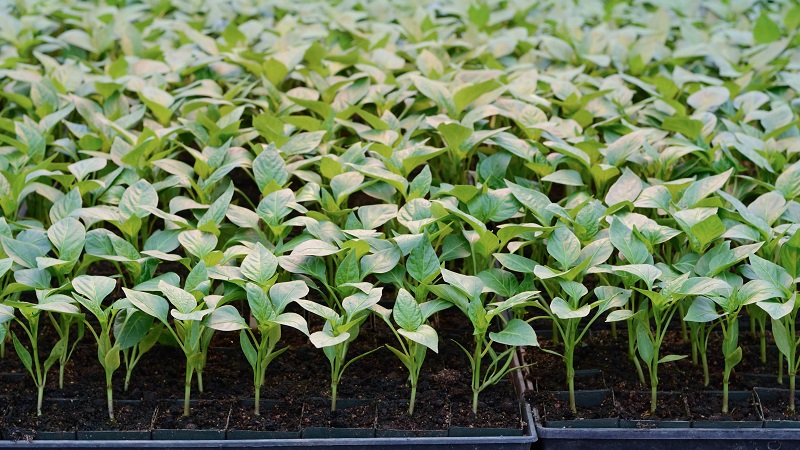
For convenience, use a pipette so that water goes directly to the root. After 2 weeks, the seedlings are fed with liquid organic fertilizers, such as chicken droppings or a solution of wood ash. Fertilizers improve the immunity of peppers and protect against diseases. To accelerate the growth of seedlings, the stimulator “Kornevin” is added; it strengthens the root system and stem.
Important! If the seedlings are planted in small cups, then after 10-15 days they are planted in larger containers. Otherwise, the roots will not have enough space to develop. When picking, water the soil generously, carefully remove the sprout with a lump of earth and place it in new soil.Experienced gardeners advise beginners to be extremely careful, as fragile stems can break.
Planting and care
Seedlings are planted on a cloudy, windless day.. The bushes are carefully removed from the containers and placed in pre-prepared holes in the beds. The distance between the grooves should be at least 60-70 cm.
The seedlings are patted down with earth and watered abundantly. When planting the Polet variety in open ground, it is recommended to cover the sprouts with polyethylene so that the pepper is not damaged by wind, rain and fog. After 7-10 days, the film is removed.
Further care of the plant is as follows:
- Regular watering. The beds are moistened every 5 days; 1-1.5 liters of water are consumed per bush. Water carefully, directing the stream directly to the root. When using a watering can, be sure to use a nozzle; when watering with a hose, put on a special diffuser. The water temperature must be at least +20°C. If the summer is hot and rainy, then the amount of water is reduced.
- Weeding. In the beds you can often see bindweed, dandelions, wood lice and other plants. Unwanted vegetation worsens the microflora of beds and leads to the emergence of insect pests. Remove weeds before watering.
- Loosening the beds. Once a week, gardeners advise loosening the beds so that the soil is saturated with oxygen. Loosen the soil to a depth of 10 cm, away from the roots. Usually the procedure is combined with weeding.
- Fertilizer. Throughout the entire growing period, plants are fertilized with organic and mineral fertilizers. They improve the taste of fruits, protect against diseases, and increase immunity. Urea, superphosphate, Bordeaux mixture, ash, burdock infusion, and ammonium nitrate are recognized as excellent remedies.Fertilize peppers every 10-15 days. Gardeners recommend fertilizing in the morning or evening to avoid burns.
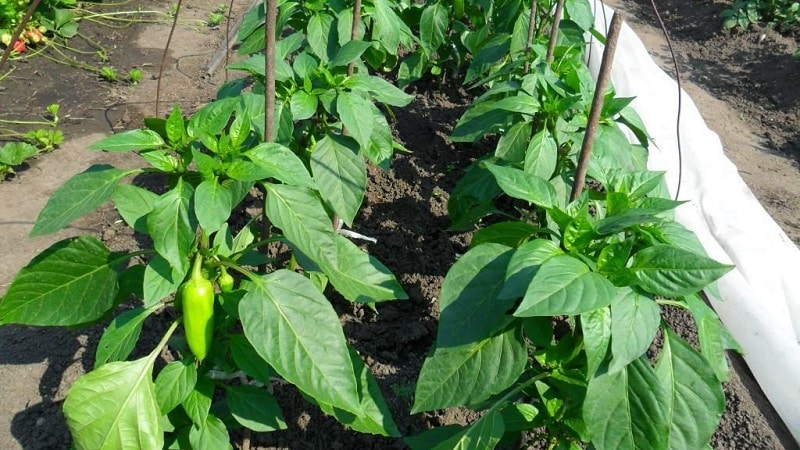
Features of cultivation and possible difficulties
Despite the fact that the Poljot variety is unpretentious in care, sometimes gardeners have problems with growing it. To avoid them, We advise you to adhere to the following recommendations:
- when planting in a greenhouse, thoroughly wipe all surfaces with a disinfectant;
- water the bushes only in the early morning;
- for irrigation, use settled water;
- alternate organic and mineral fertilizers;
- follow the rules of crop rotation;
- use foliar sprays as protection against insects;
- Regularly ventilate greenhouses or greenhouses.
If the leaves become dry and yellow, the plant probably lacks minerals: nitrogen, phosphorus, calcium. To prevent problems, it is advised to carefully monitor the amount of fertilizer applied and read the dosage recommendations.
Sometimes the opposite situation happens - there are too many minerals, which is why the fruits stop growing and the foliage grows rapidly. Sprinkling with dry wood ash and abundant watering will help correct the situation.
It can be useful:
Typical diseases and pests
Among the pests that attack the beds are thrips - black bugs with a striped abdomen.. As a rule, they appear during the flowering period, when the fruits are just beginning to ripen. Thrips suck the juice and nectar from the plant, which is why the peppers begin to slowly die.
Thrips are excellent camouflages., so it is not easy to see them with the naked eye.As a preventative measure, gardeners regularly inspect the bushes and spray them with HOM. Colorado beetles also have a negative effect on peppers. The well-known striped insects and their larvae are capable of destroying entire crops. “Typhoon” or “Tornado” products help fight pests.
Important! The causes of many pests lie in improper care, contaminated soil or high humidity. Therefore, it is important to follow the rules of disinfection and proper care of the plant.
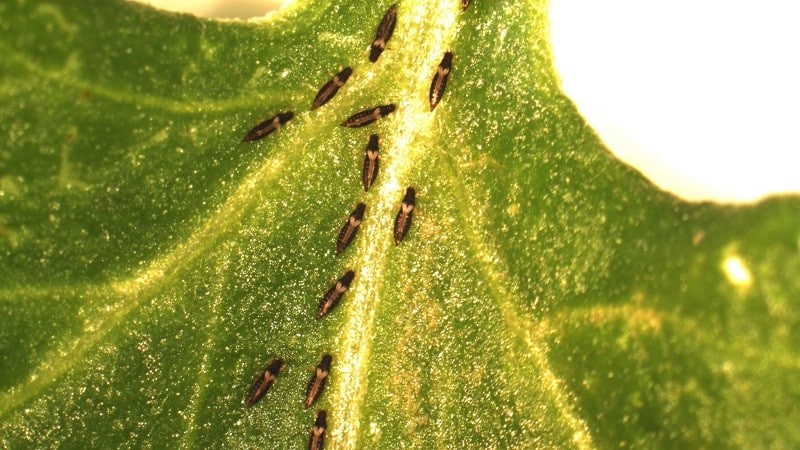
Among the diseases noted is tobacco mosaic. The disease appears in the form of a yellow pattern on the leaves, which becomes larger over time. You can become infected with mosaic from soil, weeds, and water. As a preventive measure, it is recommended to water the beds with Bordeaux mixture or a solution of onion peels. In addition to the mosaic, the pepper is “attacked” by powdery mildew in the form of a white coating. Treatment of bushes with whey is recognized as an excellent remedy for the disease.
Advantages and disadvantages of the variety
The Polet pepper variety has many advantages. It is tasty and beautiful, looks appetizing on any table or as a winter preparation. The soft and sweet pulp is full of useful elements that are necessary to maintain health and strong immunity.
The commercial qualities of the vegetable are excellent, thanks to the thick walls, the fruits are stored for a long time without losing their qualities. The variety does not require special knowledge and skills to care for, so even a beginner can get a good harvest.
Among the shortcomings noted the fact that the Polet variety shows high yield only in greenhouse conditions; in open ground the number of tasty fruits is much less.
Interesting! Sweet peppers make great stuffed peppers. Meat, spices, herbs, vegetables, seafood, and even pineapples are used as filling. Such dishes are simple to prepare, and the pepper itself serves as an excellent base.
Farmer reviews
Most gardeners are satisfied with the harvest and taste of Polet pepper, however, some were disappointed, as they expected much more from the pepper.
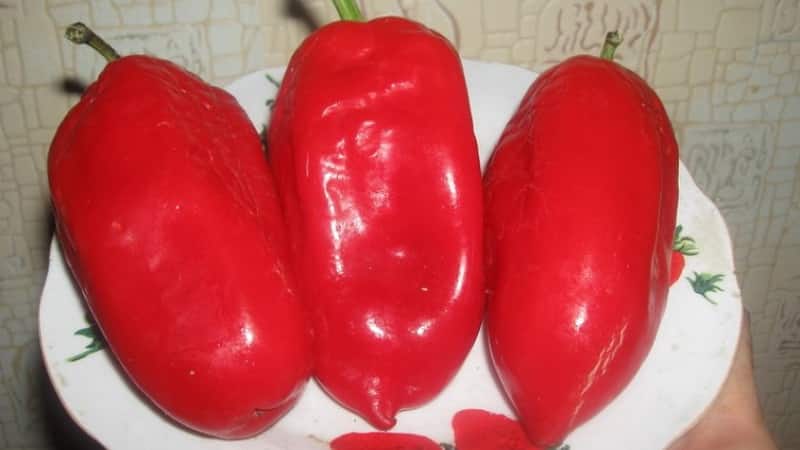
Pavel, Orel: “I planted the Polet variety for the first time, I liked the result. The peppers are beautiful and smooth. The maximum weight of one fruit reached 160 g. I prepared a salad from the vegetables and marinated them for the winter.”.
Maria, Saratov: “I love sweet peppers, every year I experiment and plant a new variety. Polet is an ideal greenhouse vegetable. The fruits are smooth and very appetizing. I planted seedlings and fertilized them with liquid organic matter.”.
Olga, Sochi: “Pepper Polet disappointed me, because at the beginning of July I noticed Colorado beetles on the leaves. I fought with the help of professional medications, but the beetle still ate some of the bushes.”.
Conclusion
To grow Polet peppers correctly, it is advised to carefully monitor the amount of fertilizing and fertilizer applied. It is better to alternate minerals and organic matter to ensure a balanced and healthy diet. Pepper loves ash, manure, and nitrogen-containing elements.
Harvest as they ripen, when the vegetables become elastic and hard. Store the fruits in a dark place, covering the top with newspaper or thin polyethylene. Part of the harvest is consumed fresh, part is processed and prepared for the winter.